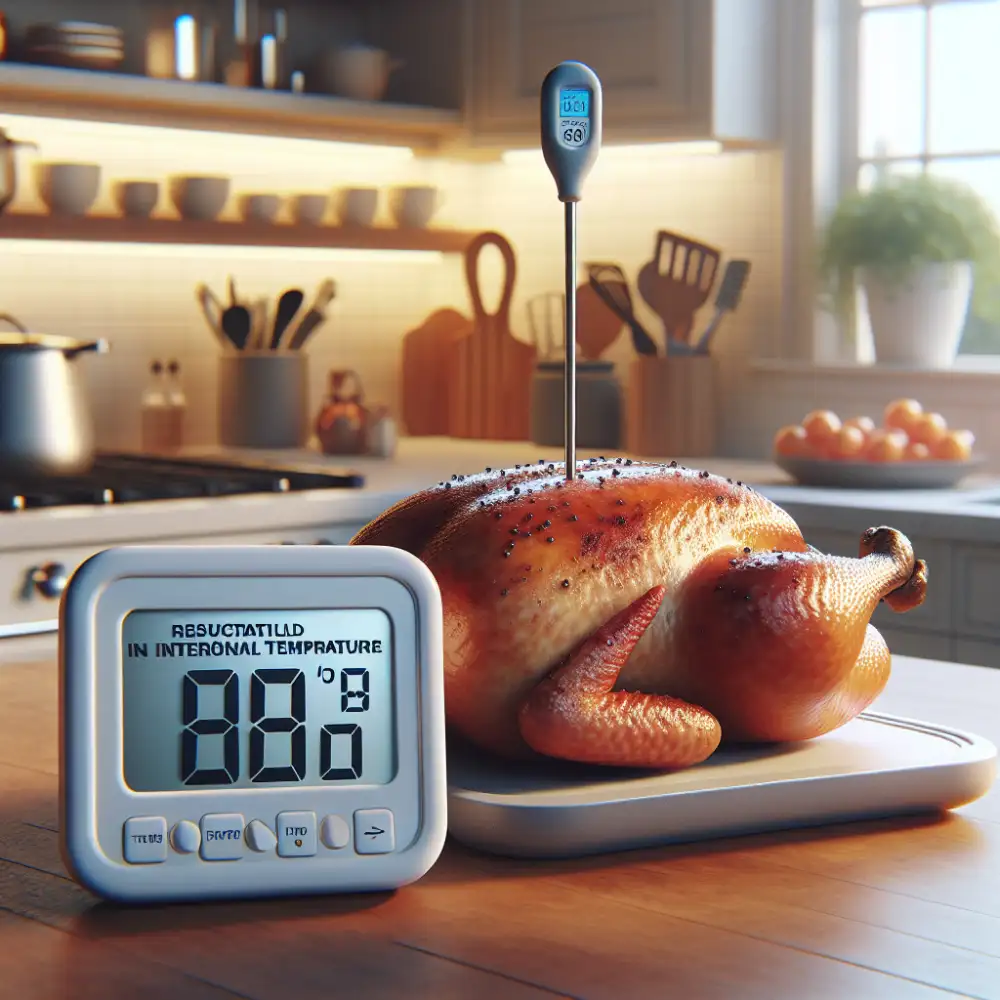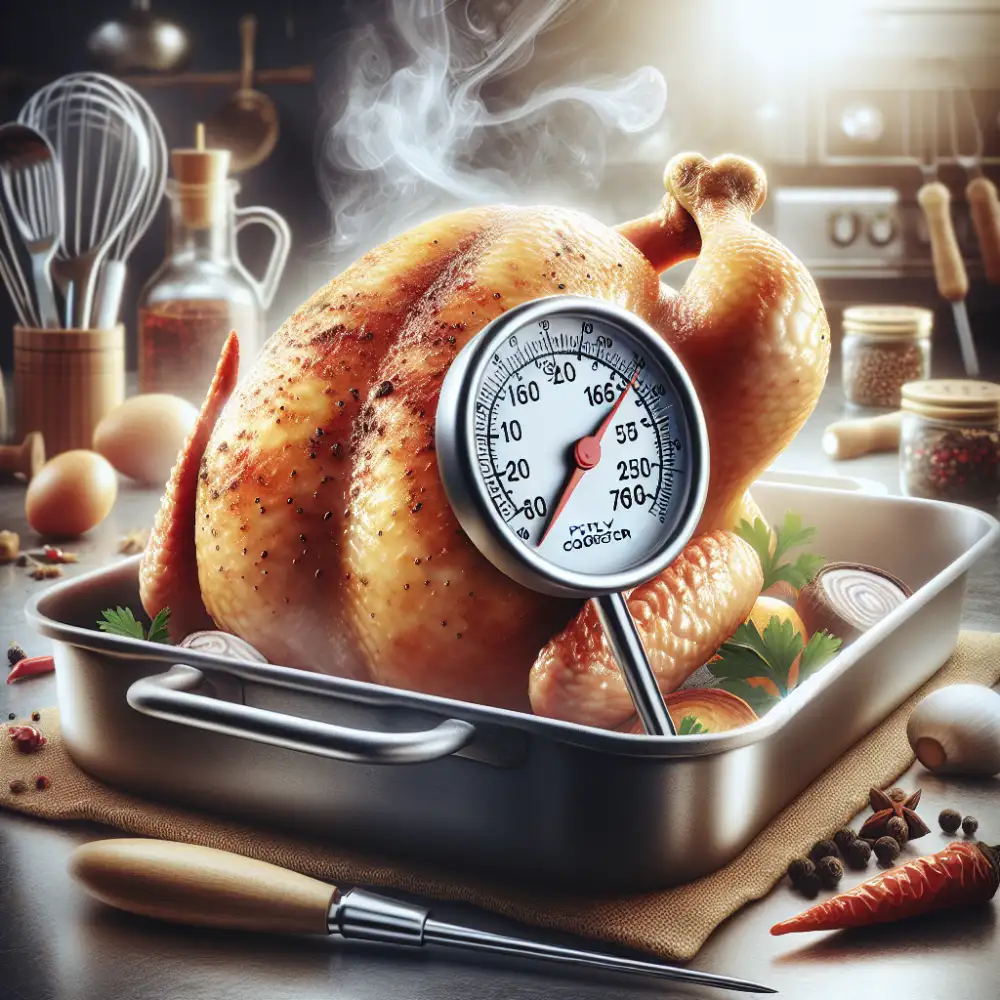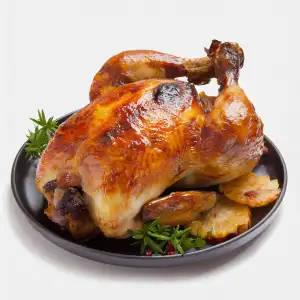Chicken Temperature: What's Safe?

Safe Internal Temperature
Chicken is delicious, but it's important to make sure it's cooked to the right temperature to avoid foodborne illness. The safe internal temperature for cooked chicken is 165°F (74°C). This temperature applies to all parts of the chicken, including the breast, thighs, legs, and wings. To check the temperature, insert a food thermometer into the thickest part of the meat, avoiding bone. Make sure the thermometer reaches the center of the meat and is not touching any bones. If you don't have a meat thermometer, there are other ways to tell if your chicken is cooked through. The juices should run clear, and the meat should be opaque and no longer pink. You can also check the temperature by cutting into the thickest part of the meat and making sure there is no pink remaining. However, using a food thermometer is the most accurate way to ensure your chicken is cooked to a safe temperature.
Using a Thermometer
A food thermometer is your best friend when it comes to making sure your chicken is cooked to a safe internal temperature. Don't rely on color alone to determine doneness, as this can be misleading.
Insert the thermometer into the thickest part of the meat, avoiding bone or gristle. For a whole chicken, check the temperature in the inner thigh area near the breast. The safe internal temperature for cooked chicken is 165°F (74°C). Make sure the thermometer registers this temperature for at least 15 seconds before removing the chicken from the heat.
If you're cooking chicken parts, like breasts or thighs, insert the thermometer into the thickest part without touching bone. Again, ensure the temperature reaches 165°F (74°C). Remember that cooking times can vary depending on the size and cut of the chicken, so using a thermometer is crucial for ensuring both safety and optimal juiciness.
Different Cuts of Chicken
Chicken, a versatile and delicious protein source, can be prepared in countless ways. From whole roasted birds to bite-sized pieces, the cut of chicken you choose will influence the cooking time and method. Regardless of the cut, it's crucial to cook chicken thoroughly to an internal temperature of 165°F (74°C) to eliminate the risk of foodborne illness.
Chicken breasts, known for their lean protein, are best cooked to an internal temperature of 165°F (74°C). Overcooking can lead to dry, tough meat. Chicken thighs and drumsticks, with their higher fat content, can withstand longer cooking times and benefit from reaching an internal temperature of 175°F (79°C) for optimal tenderness and flavor. These cuts are more forgiving if cooked slightly beyond the recommended temperature. Whole chickens should be cooked to an internal temperature of 165°F (74°C) in the thickest part of the thigh, ensuring that all parts of the bird are cooked through.

To accurately measure the internal temperature, it's essential to use a food thermometer. Insert the thermometer into the thickest part of the meat, avoiding bone, to get the most accurate reading. Remember that cooking times may vary depending on the size and thickness of the chicken, as well as the cooking method used.
Visual Cues
When it comes to chicken, we always want to make sure it’s cooked to a safe internal temperature. But sometimes, it’s hard to tell just by looking. Here are a few visual cues that can help you determine if your chicken is cooked to the recommended 165°F (74°C):
| Poultry Part | Safe Internal Temperature (°F) |
|---|---|
| Whole Chicken/Breast | 165°F |
| Chicken Thighs | 165°F |
| Chicken Drumsticks | 165°F |
| Chicken Wings | 165°F |
Color Change: Raw chicken has a pinkish hue. As it cooks, the proteins denature and the color changes to white. If the chicken is still pink inside, it’s not cooked through.
Juices Run Clear: When you pierce the thickest part of the chicken with a fork or knife, the juices should run clear. If the juices are still pink or cloudy, it needs to cook longer.
Texture: Raw chicken is quite rubbery. As it cooks, the muscle fibers firm up. You can test the doneness by gently pressing on the chicken. If it feels firm and springs back, it’s likely cooked. However, always double-check with a thermometer for accuracy.
Remember, these visual cues are helpful guides, but they shouldn’t be the only method you rely on. The most reliable way to ensure your chicken has reached a safe internal temperature is to use a food thermometer.
Resting Time
Once your chicken is cooked to a safe internal temperature of 165°F (74°C) as measured with a food thermometer, you might think it's ready to be devoured. But hold on! Letting your chicken rest for a few minutes before slicing and serving is crucial for juicy, flavorful results. This resting period, typically 5-10 minutes for a whole chicken or 3-5 minutes for smaller cuts, allows the muscle fibers in the chicken to relax. When chicken cooks, its proteins tighten up, squeezing out moisture. Resting gives the proteins time to reabsorb some of those flavorful juices, resulting in a more tender and delicious meal. Think of it like letting a steak rest – you wouldn't cut into it right away! So, next time you're cooking chicken, remember that a little patience goes a long way. Give it a proper rest, and you'll be rewarded with juicy, flavorful chicken every time.
Consequences of Undercooked Chicken
Consuming undercooked chicken can have serious health consequences due to the potential presence of harmful bacteria like Salmonella and Campylobacter. These bacteria can cause food poisoning,

"165 degrees Fahrenheit: the magic number for juicy, safe-to-eat chicken."
Evelyn Partridge
Reheating Chicken
When you're craving a delicious chicken dinner but don't have time to cook from scratch, reheating leftovers is a lifesaver. However, it's crucial to reheat chicken properly to ensure it's safe to eat. Always make sure your chicken reaches an internal temperature of 165°F (74°C) when reheating. This is the safe temperature that kills any harmful bacteria that may be present. You can use a food thermometer to check the internal temperature. Don't rely on visual cues like color or texture to determine if the chicken is cooked through.
There are several safe and effective methods for reheating chicken. Using an oven ensures even heating and helps retain moisture. Preheat your oven to 350°F (175°C). Place the chicken in an oven-safe dish and cover it with foil to prevent drying out. Reheat for about 15-20 minutes, or until the internal temperature reaches 165°F (74°C). If you're short on time, the microwave is a convenient option. Place the chicken in a microwave-safe dish and cover it with a damp paper towel to help retain moisture. Heat on medium power for 1-2 minutes, then check the temperature. Continue heating in 30-second intervals until the chicken reaches 165°F (74°C).
Published: 15. 07. 2024
Category: Food



